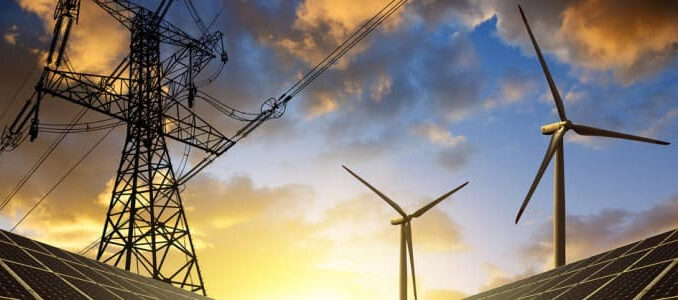
What exactly is green? Governments around the globe are now considering the importance of defining energy terminology in the transition to “green” in order to create clear effective strategies. However, controversy has been sparked over the inclusion of gas and nuclear power as part of the EU’s ‘green energy’ investments as environmentalists accuse the EU of greenwashing in its latest move, causing many states to rethink their idea of clean energy. While many world powers are striving to eventually achieve net-zero carbon emissions and reduce other greenhouse gasses, several argue that they cannot simply replace one harmful practice with another. Europe has been praised for its rapid curbing of coal energy production and its general leadership in the renewable energy transition, particularly seen during the COP26 climate summit last November. But as the region moves away from traditional fossil fuel power, it must decide how best to transition towards a cleaner future.
In its most recent draft energy plan, the EU decided to include natural gas and nuclear energy projects as “green” investments. This follows more than a year of debate between regional governments over what to include. The European Commission delivered its latest technical rules to diplomats on 31st December, just hours before the deadline, leading many to accuse the body of trying to bury the proposals. The Commission is allowing just eight working days for any responses to the complex proposal.
If included, gas and nuclear power would fall under the “taxonomy of environmentally sustainable economic activities”, meaning gas and nuclear firms could attract billions in investments from companies aiming to direct greater funding to clean energy projects.
Green parties across the region are accusing the European Commission of greenwashing, stating that natural gas and nuclear energy projects are still harmful to the environment and the climate, and should not be included in tax exemptions. Prominent environmentalists, such as Greta Thunberg, have criticized the EU for its ‘fake climate action’. And the Austrian government has even gone so far as to say it will sue the governing body should the plans move forward.
But other EU powers that continue to rely on nuclear energy as a major power source, such as France, the Czech Republic, and Hungary, are in support of its inclusion. Some believe natural gas, while still harmful, is necessary to bridge the gap in the transition towards wholly renewable energy sources. As such, gas would only be included in the plan in cases where “the same energy capacity cannot be generated with renewable sources”.
Germany has stated its support of natural gas use during the move away from ‘dirtier’ fossil fuels. A spokesperson for the government explained, “For the German government, natural gas is an important intermediate (bridge) technology on the road to greenhouse gas neutrality amid the phasing out of nuclear energy and coal-fired power generation.”
But also stated its opposition to the inclusion of nuclear energy, “However, the government’s position on nuclear energy remains unchanged. The government remains convinced that nuclear energy cannot be classified as sustainable and green,” he added.
Meanwhile, Spain demonstrated its opposition to the inclusion of both gas and nuclear projects. A source from the Ministry for the Ecological Transition said, “Natural gas and nuclear [power] cannot be considered green or sustainable technologies in the Taxonomy regulations, regardless of the possibility of making continued investments in both.” A stance that was later supported by Minister Teresa Ribera, “It makes no sense and it sends the wrong signals for the energy transition of the whole of the EU.”
While the EU is facing staunch criticism, with many of its state powers in disagreement about how to proceed with the plan, other regions are yet to tackle this issue head-on. For example, in a December 2021 White House briefing statement it was written: “carbon pollution-free electricity” means electrical energy produced from resources that generate no carbon emissions, including marine energy, solar, wind, hydrokinetic (including tidal, wave, current, and thermal), geothermal, hydroelectric, nuclear, renewably sourced hydrogen, and electrical energy generation from fossil resources to the extent there is active capture and storage of carbon dioxide emissions that meets EPA requirements.”
In this evaluation, as well as nuclear power, traditional fossil fuel operations can also be considered ‘green’ so long as they implement sufficient carbon capture and storage (CCS) technologies to make them ‘carbon-neutral’. Yet, according to the US Environmental Protection Agency, fossil fuels and nuclear energy fall under ‘conventional power’ rather than ‘green power’.
The EU seems to be a test subject for how a region will define “green” during the clean energy transition. As it creates a strategy for the future of energy investments across the region, other parts of the world look to Europe as a leader in the transition, to see how it deals with the complexities of terminology definitions, which could have significant funding repercussions and a knock-on effect on the environment.
By Felicity Bradstock for Oilprice.com
